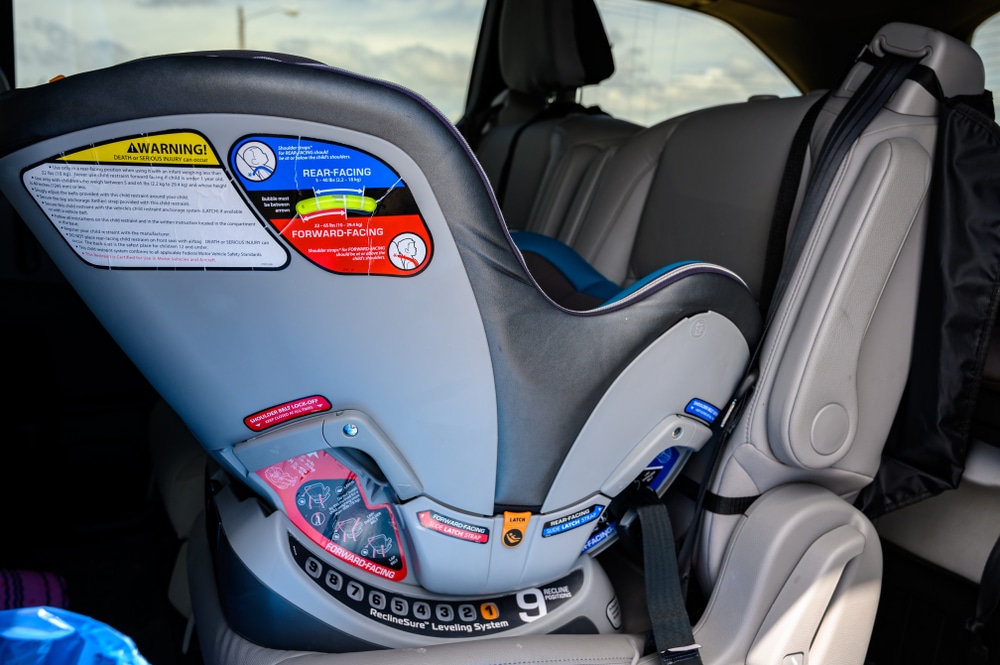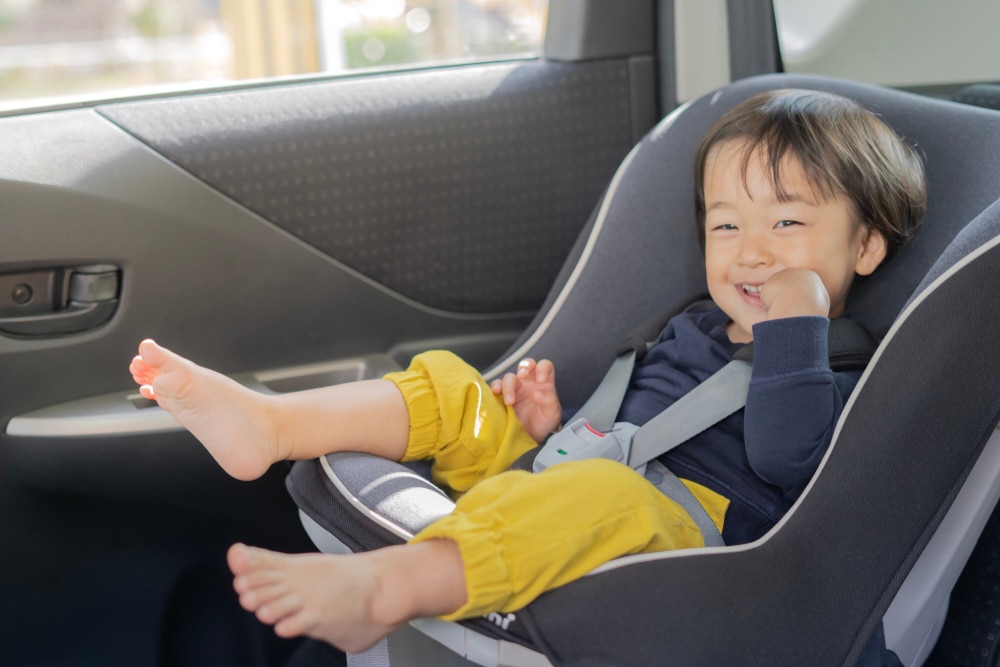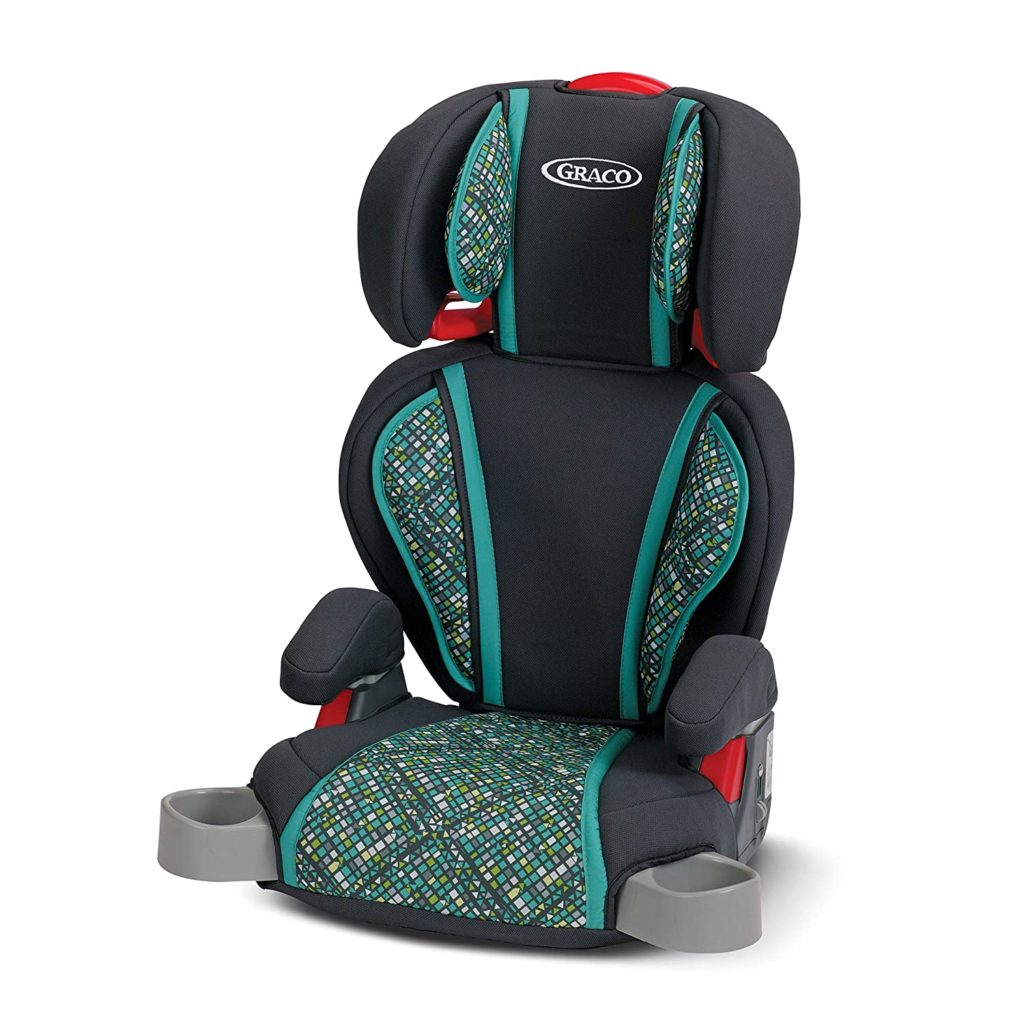Children are at greater risk of suffering severe bodily injury or death during a motor vehicle accident. The regulatory scheme outlined below protects the citizens of Alabama.
Safety restraints and booster seats protect children during motor vehicle accidents. These laws exist in Alabama to ensure public safety.
Alabama car seat laws prescribe various requirements based on the weight, height, and age of child passengers in motor vehicles. Parents should adhere to the following regulations for the safety of all child passengers on Alabama’s roads.

Requirements for Infants and Toddlers
In Alabama, every infant and toddler must be transported in a rear-facing car seat until they exceed the maximum height or weight permitted by the car safety seat’s manufacturer.
If infants and toddlers in Alabama fall under the height and weight requirements required by the seat’s manufacturer, then parents and drivers must use a rear-facing car seat until the children reach two years old.
Adult drivers must not place a rear-facing car seat in its opposite position or directly in the line of an active airbag.
The rear-facing car seat’s harness must be snug. Drivers and parents must place the harness clip at the chest’s center level with the child’s underarms.
Parents and drivers must secure every rear-facing car seat by a lap belt. Parents and drivers may also weigh down the rear-facing car seat using a LATCH.
Car Seat Rules for Toddlers and Preschoolers

Children below two years old who exceed the rear-facing weight or height limit for their rear-facing car seat must use a forward-facing car seat with a harness.

Children two years of age and older must also use a forward-facing car seat with a harness; however, the children cannot exceed the highest height or weight permitted by the forward-facing car seat manufacturer.
When Can My Child Use a Booster Seat?

Under Alabama law, those children whose height or weight exceeds the limits set forth by the forward-facing car seat’s manufacturer must use a belt-positioning booster seat. The child is no longer required to use a belt-positioning booster seat when he or she can wear a seat belt. The booster seat laws of Alabama must be construed in the context of public safety regulations.
Most children may wear a seat belt under Alabama law when they are at least 4 feet and 9 inches tall. Different manufacturers may make seat belts and lap belts with different features and various dimensions. Drivers should see if a particular vehicle make and model contains seat belts capable of being worn by children shorter than 4 feet and 9 inches tall.
Adult drivers should place their children in belt-positioning booster seats with shoulder and lap belts. Also, the children must be placed in high back booster seats if an automobile has a low back seat. Drivers and parents should monitor their child’s development to make sure that these safety devices remain functional and effective.
Until a child’s feet can touch the floor with their knees bent, a parent or driver should use a belt-positioning booster seat . The belt-positioning booster seat must raise the child until the safety belt fits the child. If the safety belt does not fit the child, then the parent or driver should assess how to adjust the belt-positioning booster seat to ensure the child’s safety.
Older Children and Seat Belts

Under Alabama law, every child 13 years old and younger must be seated in the rear seats of vehicles for optimal protection. As children develop and grow they must use the vehicle seat belt alone. These children should always use shoulder and lap seat belts. Drivers and parents should make sure that the shoulder and lap belts are fastened correctly before driving with children.
Children between the ages of 6 and 14 must wear a seat belt. This is a firm regulatory provision; parents and drivers should pay close attention to their child’s physical development near the ages of 5 and 6. If the child is larger or taller than average then the child may be required to wear a seat belt even though he or she has not yet reached the age of 6.
Three Types of Infant Car Seats
Choosing an infant car seat can seem daunting because manufacturers offer a variety of designs for parents and drivers to consider. Three types of infant car seats are available for use.
- Rear-facing car seats are the best choice for young children. The rear-facing car seats have a harness; also, the rear-facing car seat cradles and shifts with your child’s body in the event of a crash.
- Forward-facing car seats have a tether and harness that limits a child’s forward movement if a crash occurs.
- A booster seat situates the seat belt over the strong parts of the child’s body.
Penalties for Failure to Obey Car Seat Laws in Alabama
Under Alabama law, any person violating any of the regulations outlined above will be fined twenty-five dollars for each separate offense.
If an offender provides proof after obtaining an appropriate child passenger restraint, a trial judge may dismiss the charges and levy no court costs.
The Alabama Department of Public Safety will assess one point for the first offense of violating child safety restraint requirements under Alabama child seat laws.
The Alabama Department of Public Safety will assess two points for the second or subsequent offense of violating child safety restraint requirements under the car seat laws of Alabama.
Vehicle Types
The above child restraint laws apply to the following vehicles: crossovers, SUVs, pickup trucks, minivans, passenger cars, and any van with ten or fewer seats. These laws do not apply to large vehicles designed to carry large groups of people, such as buses or passenger vans.
No Alabama laws prevent children from riding on a motorcycle as a passenger.
Alabama state law enforcement officials do not suggest buying or using outdated car seats.
Yellow Dot Program
Alabama is a part of the yellow dot program. Participants receive a yellow dot they must place on their car window. Enrollees must fill out forms listing their name, physician’s name, and emergency contact numbers. Motor vehicle operators must place these forms inside the motor vehicle’s glove compartment.
The driver should not remove these forms from the glove compartment.
First responders in Alabama arrive at the scene of a motor vehicle accident and search for the yellow dot on the vehicle. The first responders will check the vehicle’s glove compartment for the pre-filled forms. First responders can use this information to prevent serious injury or death.
Final Thoughts
Alabama’s car seat laws are straightforward and clear. Young children are at a greater risk of serious bodily injury or death during a motor vehicle accident. The regulations outlined in this article exist to protect adults and children as they travel throughout the state in motor vehicles.
Legislators draft car seat laws to help adults protect their children from serious bodily injury and death. Adhering to these guidelines and regulations promotes public safety, personal responsibility, and family unity. Every driver using Alabama roads should be mindful of the presence of children on county roads, state roads, and highways.
Motor vehicle safety regulations in Alabama are straightforward and clear, but residents and visitors should be aware of the policies the state of Alabama has implemented to protect children.





